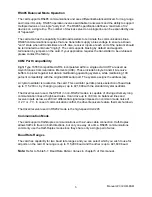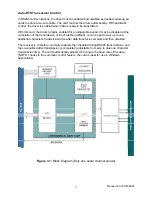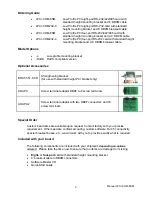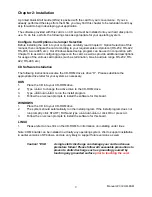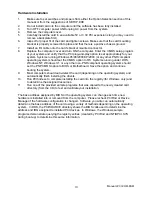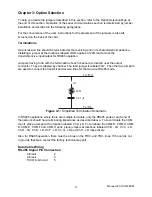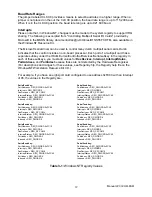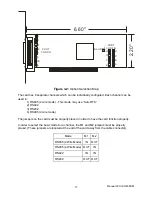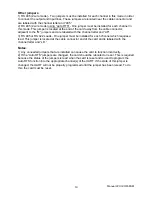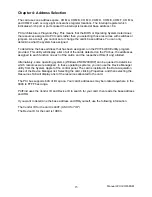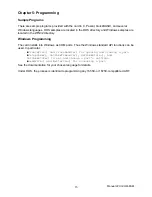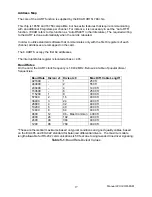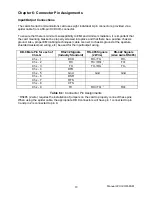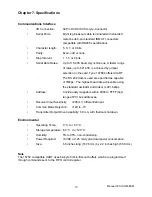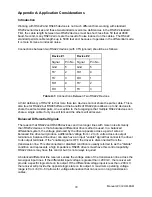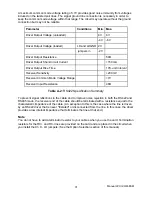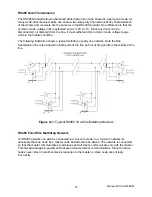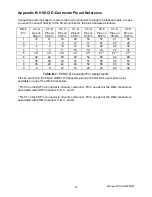
Manual LPCI-COM-8SM
20
Appendix A: Application Considerations
Introduction
Working with RS422 and RS485 devices is not much different from working with standard
RS232 serial devices and these two standards overcome deficiencies in the RS232 standard.
First, the cable length between two RS232 devices must be short; less than 50 feet at 9600
baud. Second, many RS232 errors are the result of noise induced on the cables. The RS422
standard permits cable lengths up to 5000 feet and, because it operates in the differential mode,
it is more immune to induced noise.
Connections between two RS422 devices (with CTS ignored) should be as follows:
Device #1
Device #2
Signal Pin
No. Signal Pin
No.
Gnd 5 Gnd 5
TX
+
2 RX
+
9
TX
-
3 RX
-
1
RX
+
9 TX
+
2
RX
-
1 TX
-
3
Table A-1:
Connections Between Two RS422 Devices
A third deficiency of RS232 is that more than two devices cannot share the same cable. This is
also true for RS422 but RS485 offers all the benefits of RS422 plus allows up to 32 devices to
share the same twisted pairs. An exception to the foregoing is that multiple RS422 devices can
share a single cable if only one will talk and the others will all receive.
Balanced Differential Signals
The reason that RS422 and RS485 devices can drive longer lines with more noise immunity
than RS232 devices is that a balanced differential drive method is used. In a balanced
differential system, the voltage produced by the driver appears across a pair of wires. A
balanced line driver will produce a differential voltage from +2 to +6 volts across its output
terminals. A balanced line driver can also have an input "enable" signal that connects the driver
to its output terminals. If the "enable signal is OFF, the driver is disconnected from the
transmission line. This disconnected or disabled condition is usually referred to as the "tristate"
condition and represents a high impedance. RS485 drivers must have this control capability.
RS422 drivers may have this control but it is not always required.
A balanced differential line receiver senses the voltage state of the transmission line across the
two signal input lines. If the differential input voltage is greater than +200 mV, the receiver will
provide a specific logic state on its output. If the differential voltage input is less than -200 mV,
the receiver will provide the opposite logic state on its output. A maximum operating voltage
range is from +6V to -6V allows for voltage attenuation that can occur on long transmission
cables.

